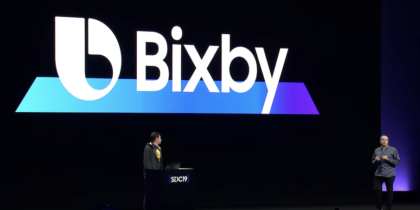Everyone is talking about artificial intelligence; however, successfully implementing this potentially revolutionary technology in the real world is more difficult than it may seem.
It’s imperative for CIOs to get on top of this technology as enterprises begin to take advantage of its benefits today. But to do that, CIOs need to understand how artificial intelligence training works, and whether their business would benefit from pre-trained or untrained AI algorithms.
Both systems offer the benefits of AI, but in significantly different ways. Pre-trained algorithms rely on knowing both the input and output data in order to deliver results, while an untrained algorithm only requires the inputs in order to work.
A simple example is classifying colored shapes. A pre-trained algorithm would be given the various shapes labels such as “a square has four equal sides” or “red pixels give off this particular value.” Using this training data, it would be relatively easy for a pre-trained algorithm to classify all the red squares or blue triangles. An untrained algorithm is given the same shapes, but told nothing about how to classify them. It would then attempt to identify patterns within the data set to categorize the shapes. Each attempt at categorizing the shapes would see the algorithm learn from previous mistakes, allowing it to make a better estimation the next time.
Both artificial intelligence training methods offer their own particular benefits; here are four considerations CIOs should take into account when choosing which system is right for them.
1. Speed
For organizations that need to sift through large data sets, using a pre-trained algorithm is the best bet to get results in a hurry. Because supervised learning means that you can preset the outputs as well as the inputs, these algorithms will be able to give you accurate results in a much shorter time frame. One of the most common examples of this technique being used today is businesses identifying cyberthreats based on the types of attacks companies have seen before.
Untrained algorithms, on the other hand, will take much more time to get up and running, given that they will need time to figure out on their own just how to categorize the data they’re being given.
Use AI to Work Without Barriers
Learn how AI-powered devices enable the future of work. Download Now
2. Flexibility
While pre-trained neural networks are much quicker off the mark when it comes to giving you results, in the long run, these systems may prove less useful. Because the outputs are fixed, they can only be applied to solve specific problems. Untrained algorithms, however, are much more flexible and can be used for a variety of situations, particularly in cases where a company looking for something, but it’s not sure what that something is.
An example of this is in threat detection. While trained applications can spot known attack vectors, an untrained algorithm will be able to spot trends that they haven’t previously seen, and flag them as potential attacks.
3. Cost to Implement
Today even the smallest company is considered a data company if they collect any amount of information from their customers. So the question now is whether it’s cost effective to use artificial intelligence techniques in order to analyze that data.
For some companies whose primary business is data, the question is moot, but what they will need to consider is whether it’s more cost-effective to employ pre-trained or untrained algorithms.
Pre-trained algorithms come ready to use, and with companies now offering pre-trained models-as-a-service, the cost barrier is dropping significantly and allowing even the smallest companies to dip their toes in the artificial intelligence training waters.
For others, untrained algorithms will be necessary, especially if companies require specific results from their data sets and want to conduct machine learning at scale. To roll out an untrained algorithm and to get it to work the way you want will require a longer term investment and the hiring of a machine learning expert, all of which makes it more expensive.
4. Hype
There is currently a lot of hype about topics like AI or machine learning at scale, but it’s important for CIOs to manage expectations, no matter what artificial intelligence training technique they are using. In many cases, the media is keen to push the boundaries of what’s possible within AI and machine learning today, as well as speculating about what’s next. When results don’t match the hype, it can lead to frustration — something CIOs need to consider when choosing with AI solution is right for them.
As we can see, artificial intelligence offers huge potential for companies of all sizes today. However, in order to get the most out of the technology, CIOs will need to examine which technology best suits their needs, what is available today and what solution is the most cost-effective for their company before they can really make AI work for them.
The Samsung Galaxy S8, which incorporates AI technology through its digital assistant Bixby, is another example of technology that’s changing the way workers operate.







